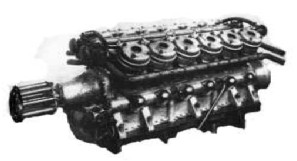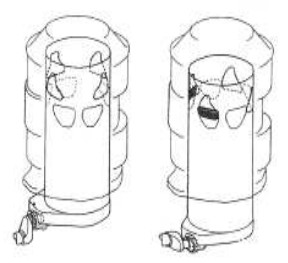Updated: 11-May-2021
Burt followed the footsteps of American engineer Knight who devised the system of double sliding sleeves to eliminate loss of spring strength and valve burning, which was a plague in the car industry of that time,
-Burt patented another system (which turned out to be similar to McCollum).
-Peter Burt, was a Scottish engineer, born in Glasgow in 1856, as we saw in the Bristol and Argyll sections.
-Burt was a prolific inventor, interested in internal combustion engines.
-He was the holder of several patents, including the one for the triple piston that is shown below, valveless as well.

"Burt's triple piston patent"
-As McCollum, a Canadian, also patented something similar and at the same time, the car and aero engine industry have called the system "Burt-McCollum."
-However it has more parts from Burt than it has from the latter.
-Recognition was given by Sir Roy Fedden adapting this system to his Bristol engines.

"Burt engine, 1917"
-Argyll also uses this system. As we advance we shall see that Potez and other brands have also made their accomplishments.
-Just as we see in the Argyll section, the cylinders have a clean appearance and are short for not having overhead valves.
-The same thing applies to the 1917 Burt engine that we have shown in this section.

"Bristol system"
-Implemented by Bristol, Roy Fedden changed the mechanism that slides the sleeve up and down, in a way that it also slides the sleeve sidewards.
-To achieve this, a small crankshaft rotated in front of the sleeve and was held by a spheroidal joint. This simplicity contrasts with the tremendous gear train needed to bring the movement to the base of each cylinder in the same engine.
-It appears that this engineer, together with McCollum, tried out "valveless" sliding sleeve engines. See Burt-McCollum.
-Bart was awarded two experimental 12-cylinder V engines, one was air cooled and the other liquid cooled. The delivered about 180 hp.


